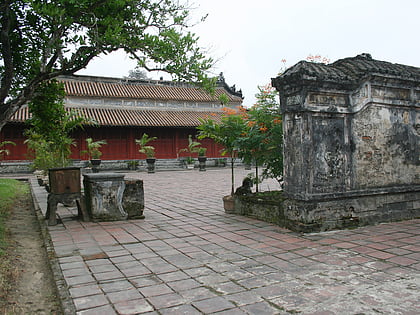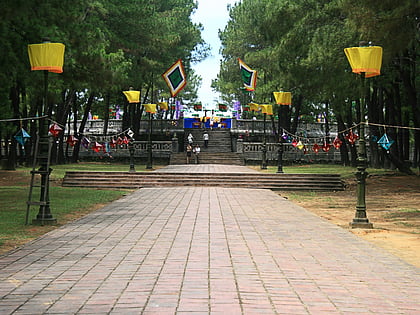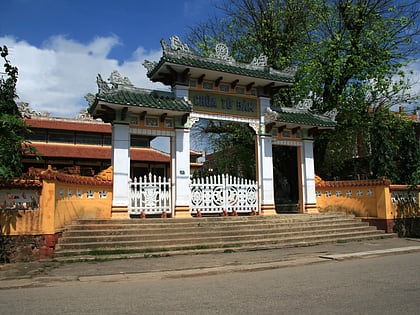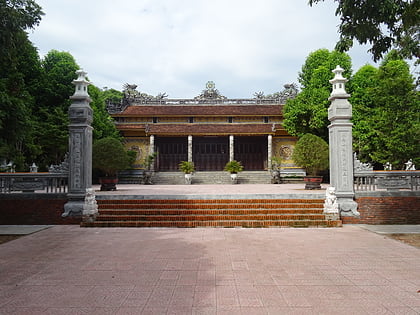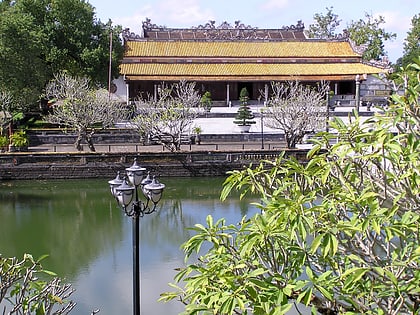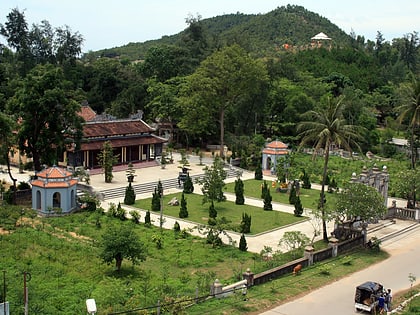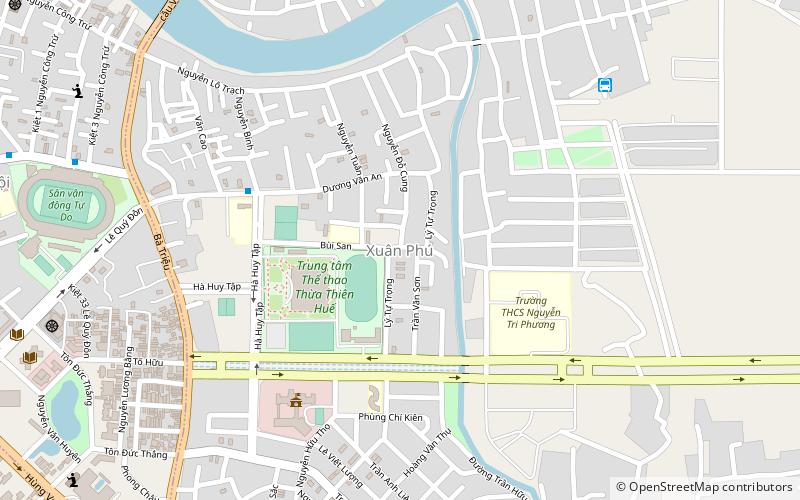Tomb of Dục Đức, Hue
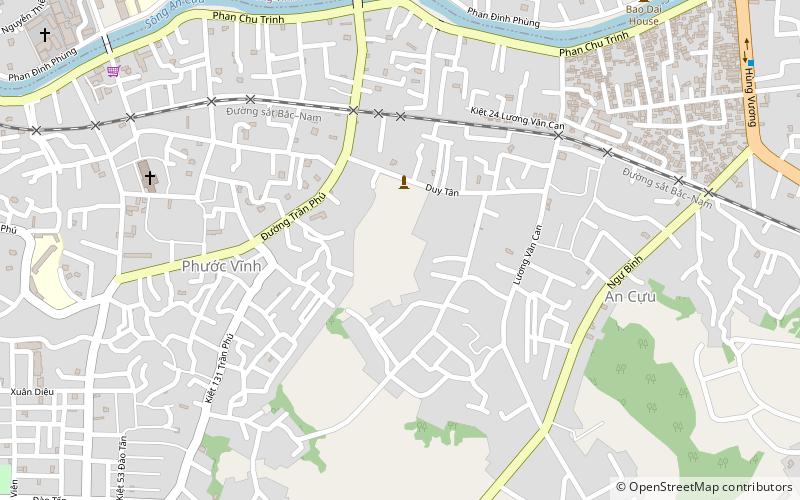

Facts and practical information
The Tomb of Dục Đức, nestled in the historic city of Hue, Vietnam, is an emblematic site that reflects the complex history of the Nguyen Dynasty. Emperor Dục Đức, whose reign was one of the shortest in Vietnamese history, lasting only three days in 1883, was later given a posthumous honor with this mausoleum. The tomb is not only a resting place for the emperor but also for his son Thành Thái and grandson Duy Tân, both of whom were dethroned for their reformist and anti-colonial stances.
Unlike the grandeur of other Nguyen Dynasty tombs, the Tomb of Dục Đức is relatively modest, mirroring the tumultuous and brief reign of the emperor. The architecture, however, is intricate and traditional, with pavilions, courtyards, and serene gardens that offer a quiet place of reflection. The tomb complex is a testament to the aesthetics of the era, with harmonious Feng Shui principles guiding its layout and design.
Located within the An Lang complex, the tomb's serene ambiance and historical significance attract visitors who wish to delve into Vietnam's royal past. The Tomb of Dục Đức stands as a somber reminder of the political challenges of the Nguyen Dynasty during a period of French colonial expansion.
Open to the public, the site provides a glimpse into the lives and legacies of the three rulers who are commemorated within its bounds. Visitors can explore the grounds and the structures, including the altars and steles that record the history of the emperors in classic Vietnamese calligraphy.
Hue
Tomb of Dục Đức – popular in the area (distance from the attraction)
Nearby attractions include: Nam Giao, Từ Đàm Pagoda, Báo Quốc Pagoda, Imperial City of Huế.
Frequently Asked Questions (FAQ)
Which popular attractions are close to Tomb of Dục Đức?
How to get to Tomb of Dục Đức by public transport?
Bus
- Sleeper bus from Hue to Nha Trang (22 min walk)
- Hué Bus Station South (22 min walk)
Train
- Hue Train Station (28 min walk)
